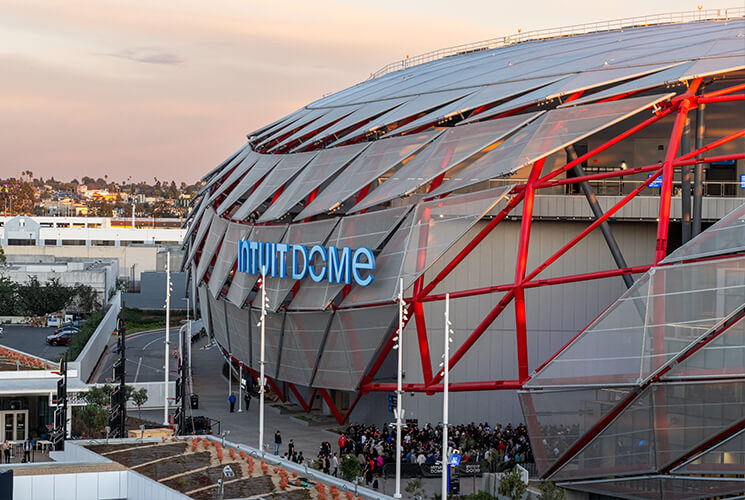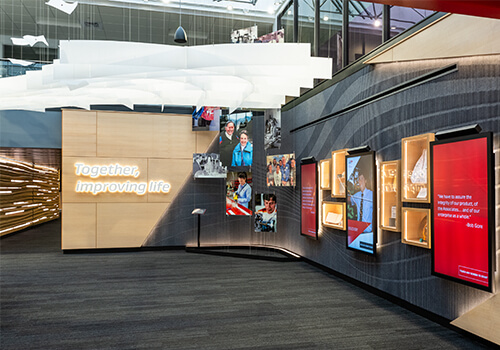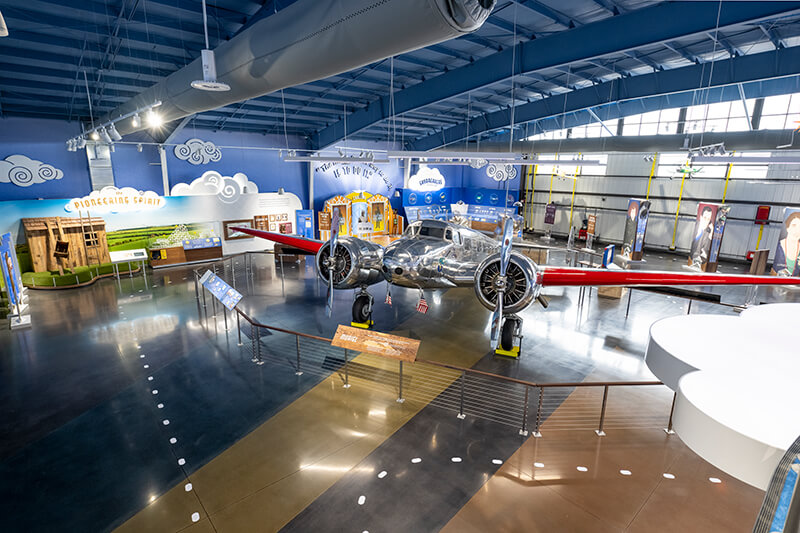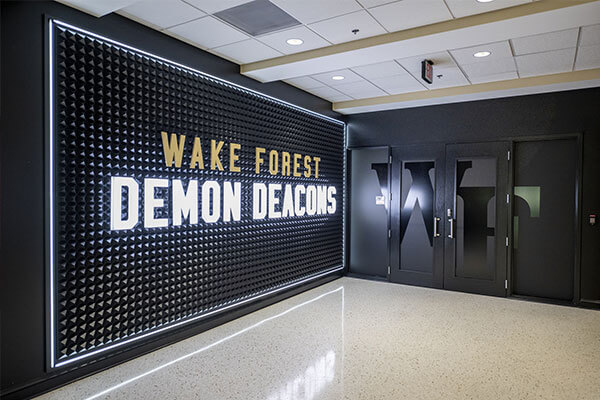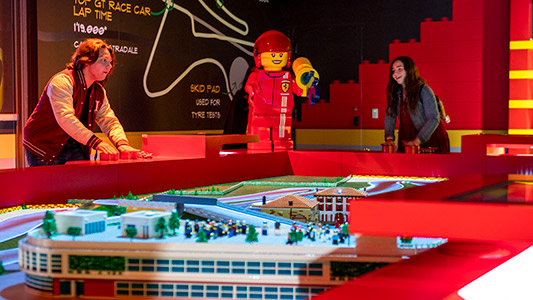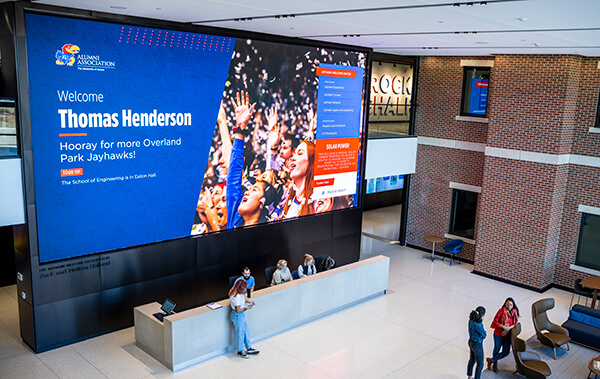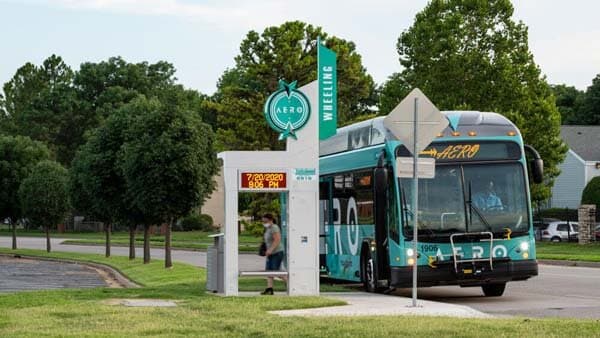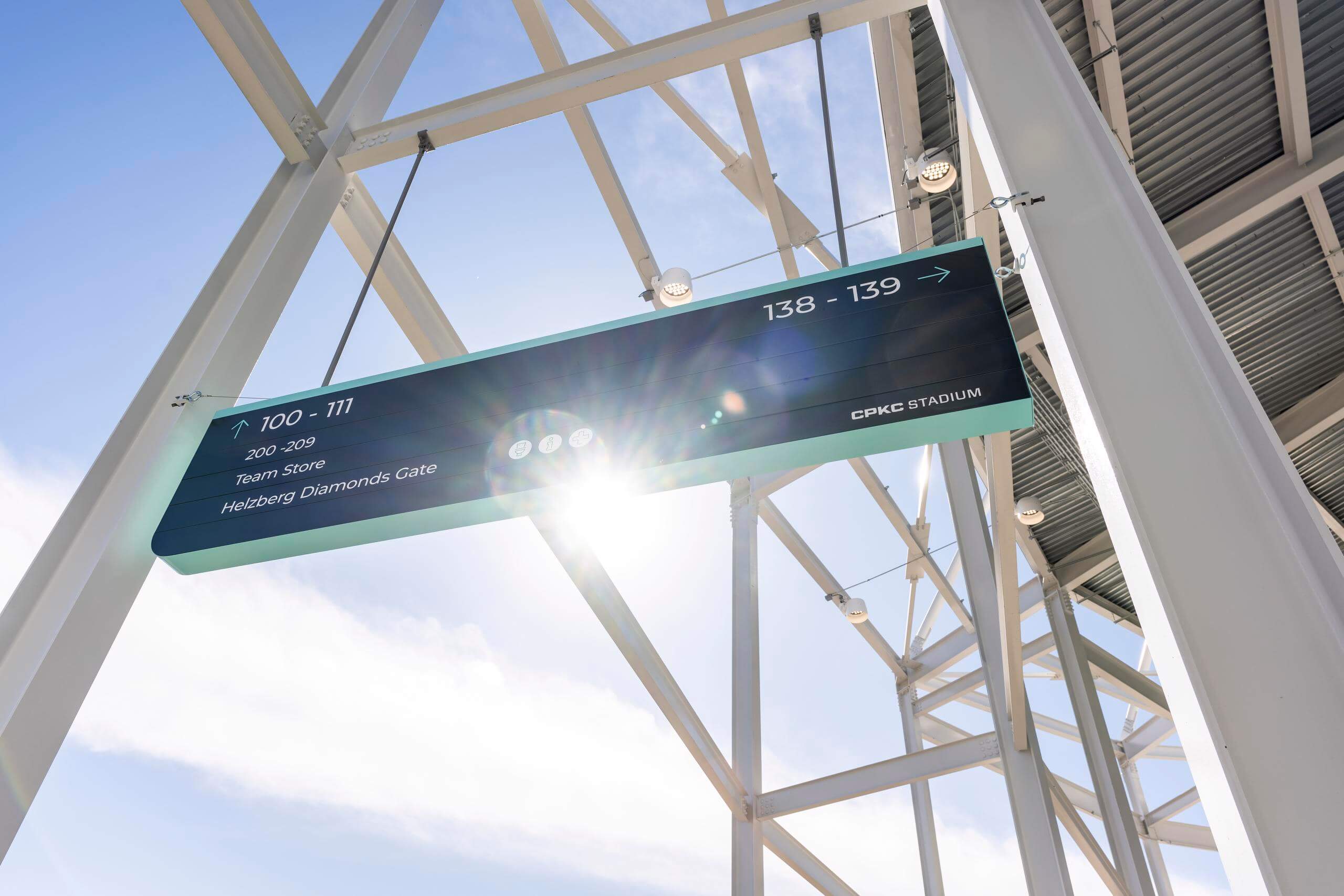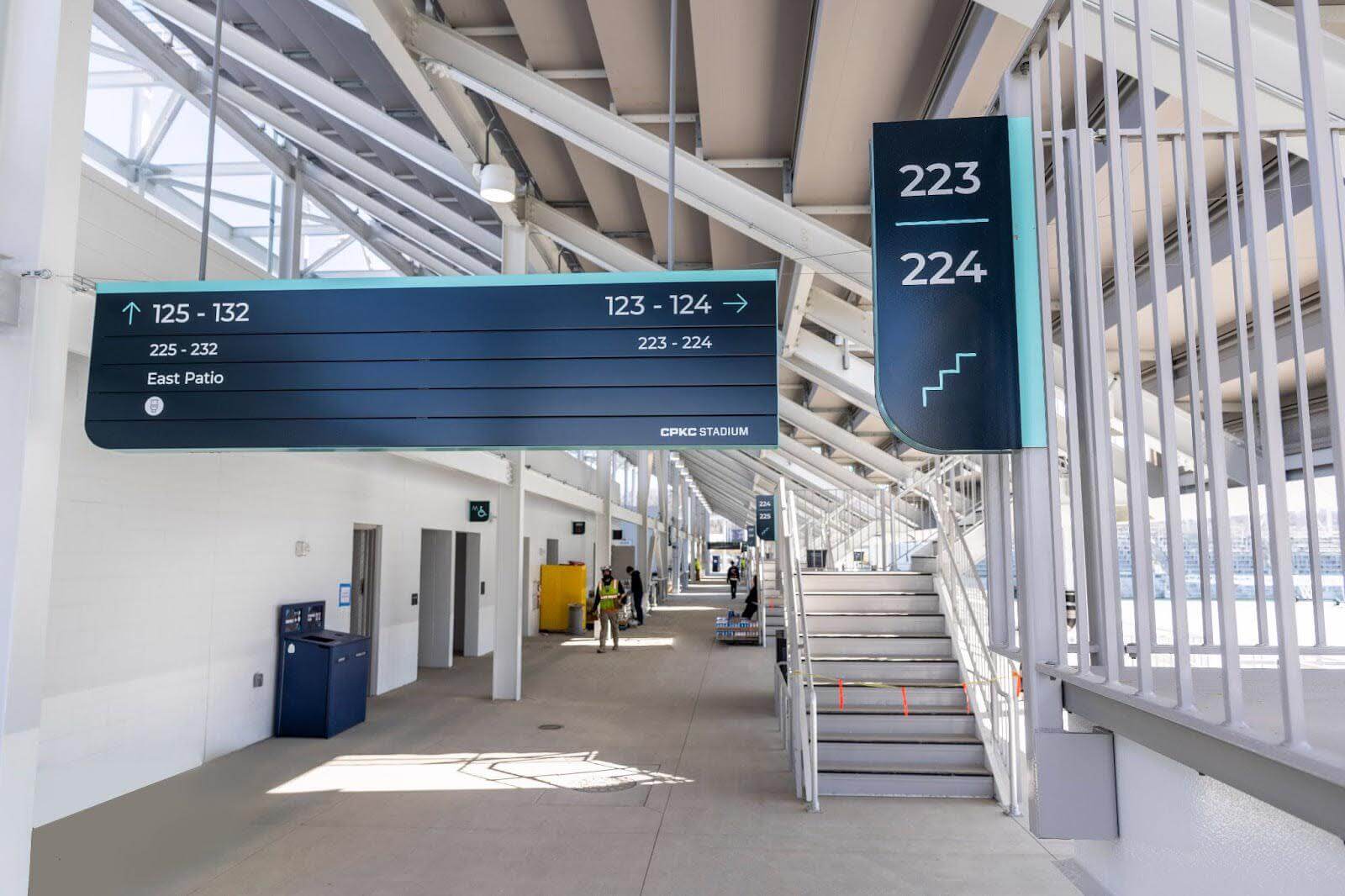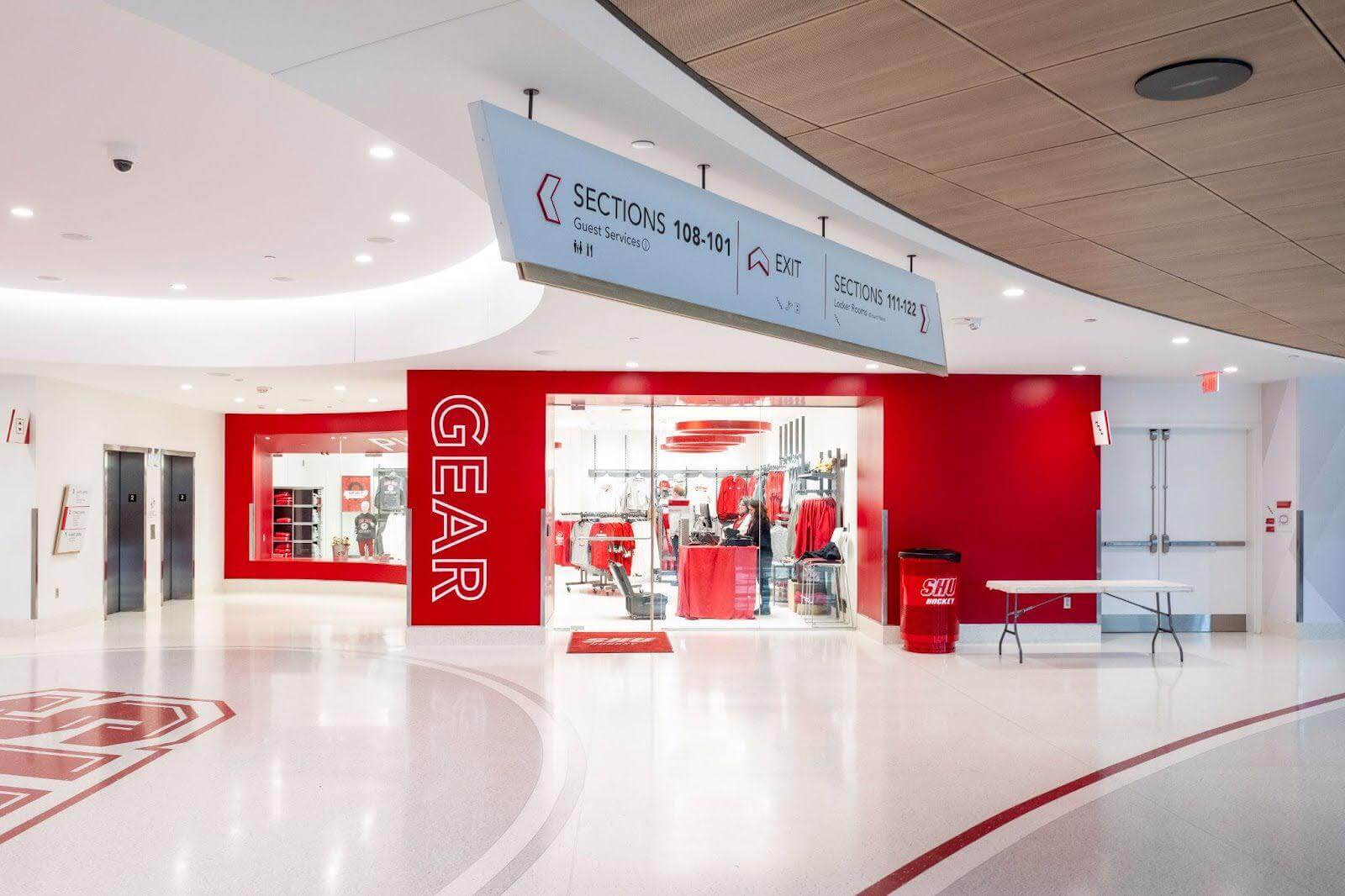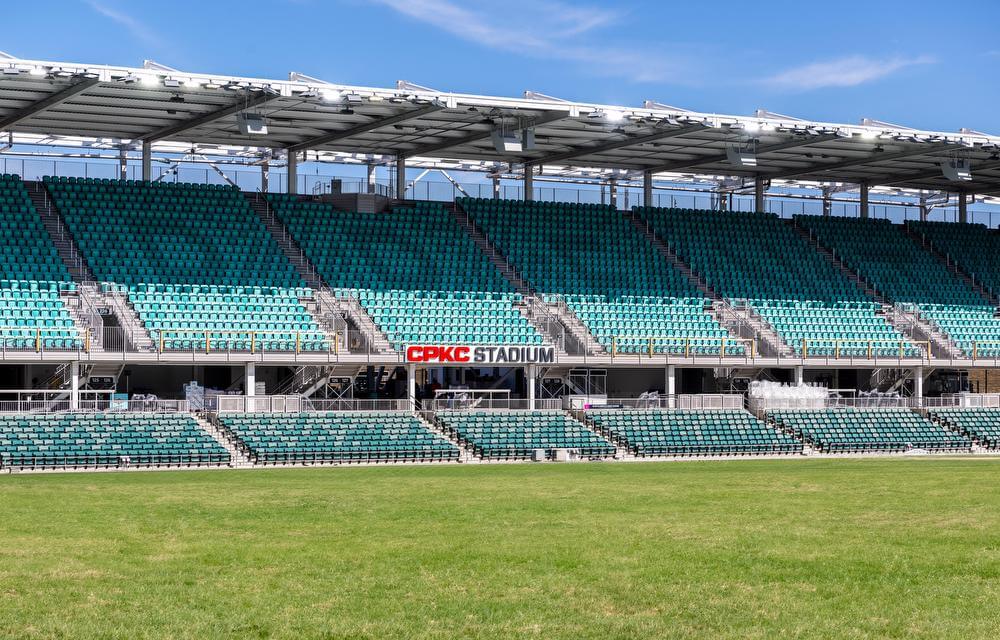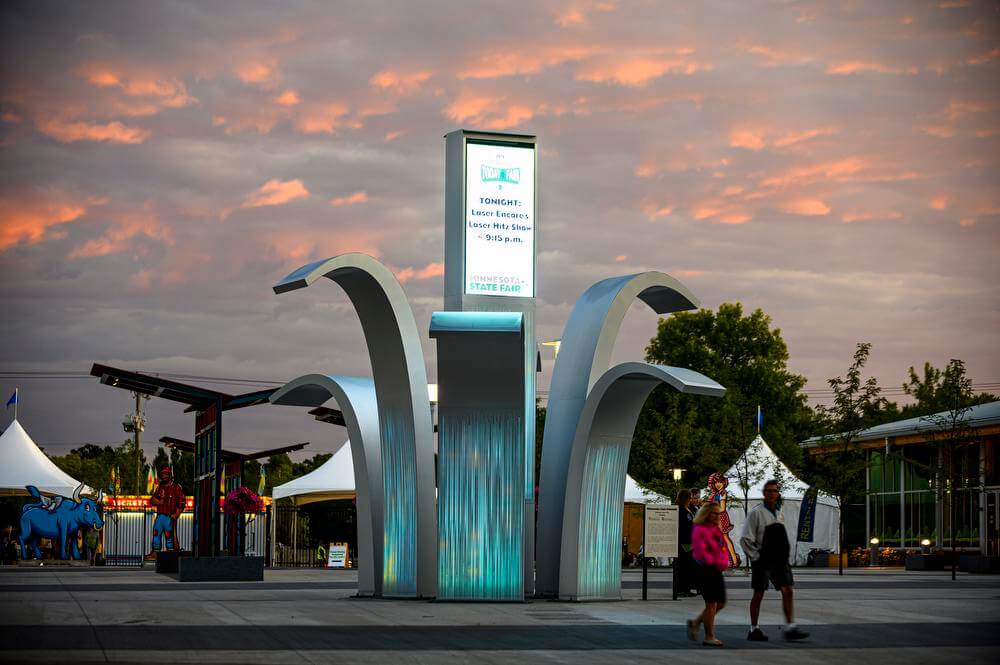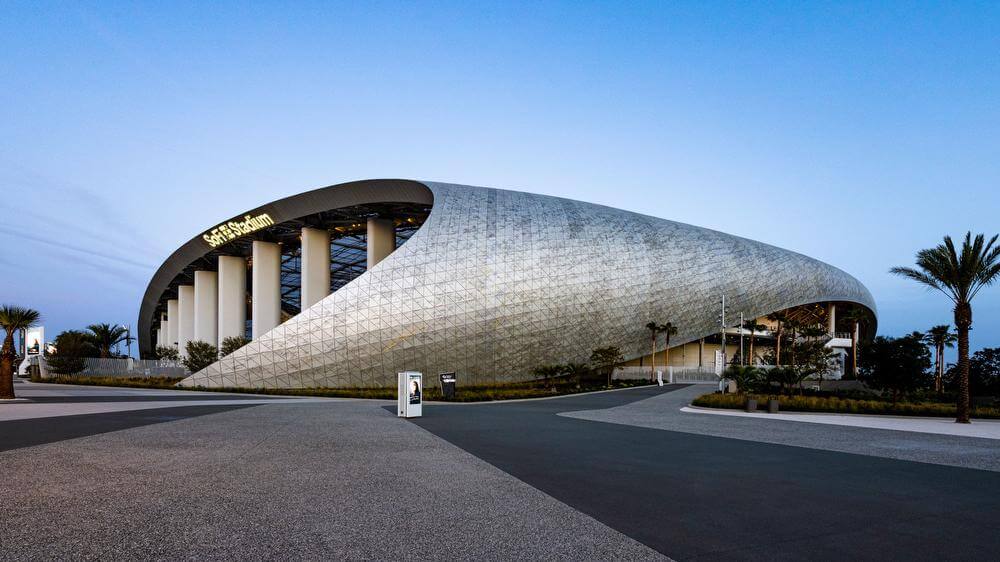How Smart Wayfinding Enhances the Stadium Experience
For sports fans, nothing is as exciting as going to a stadium to see their favorite team play live and in-person. From the moment they step through the gate or turnstile, they’re sure to be overwhelmed with thrills as they set foot in the hallowed halls of their team’s home turf. What can quickly extinguish those thrills, however, is the frustration of not being able to find their way around.
Especially at the college and pro levels, modern stadiums are massive, sprawling and complex environments. Not only do fans need to know where their seats are, but they also want to be able to find all the amenities that make the gameday experience special. From concessions stands to VIP lounges to kids’ playgrounds, today’s sports arenas pack a lot into their footprints. This is what makes wayfinding a crucial consideration in the interior design of these facilities.
Although most venues will have signage telling visitors where to go, wayfinding is about much more than signs. It’s a strategic design system for improving the visitor experience, safety and brand perception in sports stadiums. Combined with signage, less-obvious elements such as visual spatial cues and navigation tools form the backbone of this strategy. Wayfinding for stadiums needs to take into account every type of fan experience, from first-time visitors to season-ticket holders. It also needs to factor in a variety of use cases, including emergency evacuation routes and guiding members of the press to their designated areas.
Read on to learn more about wayfinding, how it can integrate technology, its role in accessibility and how it can lead to higher revenues for stadium owners and operators.
Key Components of an Effective Wayfinding System
Signage is one of the most basic and important elements of any wayfinding strategy. The four main types of signage are:
- Identification: These range from the “MEN” sign over the men’s restrooms to the signs above concessions stands that announce what’s available.
- Directional: Directional signs point to areas of interest, giving visitors a clear idea of which direction they should be headed.
- Informational: Certain signs provide more information, such as code of conduct notifications or highlighting specific features of the venue.
- Regulatory: Some signage is required by law, such as Braille markers to ensure accessibility for the visually impaired.
Signs should be placed at certain strategic decision points around a sports stadium. These include entrances, exits, staircases or escalators, and intersections. Care needs to be taken when placing signs to ensure they will be easily seen by anyone who may be lost or confused about where to go.
Beyond their placement, it’s also crucial to think about the overall look of signs. Their typography, colors and icons should be easily scanned by people as they move past them. This not only makes it clear where they need to go but prevents foot traffic from clumping around signage as people try to make sense of it. Stadium owners also need to be aware of how crowds for different events including conventions and concerts may have different wayfinding needs than sports fans.
As important as traditional signage is for sports stadium wayfinding, it’s far from the only element of an effective strategy today.
Integrating Digital and Interactive Wayfinding
Digital technology has become an important aspect of modern wayfinding initiatives in stadiums. For example, many facilities now have digital signage that can be updated from a central software dashboard to provide instant updates or change signs based on the context. This can be essential not only for changing signs for different events, but also for rerouting crowds in real-time to alleviate congestion or provide updates on the status of parking availability.
Sports fans today use their smartphones to stay connected to practically every aspect of their fandom, from buying tickets online to getting up-to-the-minute score updates. It should come as no surprise, then, that many people today expect the same level of connectivity when at the stadium. This is why many venue owners have integrated interactive apps that enable fans to pull up stadium maps on their personal devices. Being able to find restrooms, team shops, concessions and other features right in the palms of their hands gives fans a degree of control and security that traditional wayfinding techniques couldn’t provide.
This makes fan navigation technology a core aspect of the modern sports venue wayfinding plan. In the near future, it’s expected that digital wayfinding technologies such as augmented reality overlays or Bluetooth beacon integration will make it even easier for fans to find their way around stadiums.
Designing for Accessibility and Inclusion
Basic compliance with the Americans With Disabilities Act (ADA) requires owners to provide stadium signage designed with visually impaired people in mind. This includes Braille and tactile signs as well as using color contrast and fonts that can be read easier by those with visual impairments.
Going beyond the basics, there are other ways stadium owners can ensure their wayfinding signage design is as accessible and inclusive as possible to enhance every fan’s experience. These include providing speakers with auditory cues to help those without sight orient themselves, as well as simplified maps for neurodivergent guests. Including multilingual signs also assists international visitors or those for whom English is a second language.
In general, it’s important to keep in mind the diverse needs of fans when designing stadium wayfinding. ADA signage for stadiums is about more than regulatory compliance, as accessibility and inclusion can be powerful differentiators and enhance the public perception of the brand. It’s one important way in which wayfinding can enhance revenue, but not the only one.
How Wayfinding Drives Revenue and Fan Engagement
Believe it or not, carefully considered wayfinding can have a strong effect on a stadium’s ability to boost revenue and earn repeat visitors. Creating a smooth and efficient crowd flow management in and around the venue helps make the fan experience that much more enjoyable, which means fans are far more likely to return at their next opportunity.
In addition, clear guidance to concessions stands and merchandise stores helps increase their visibility and inspires fans to spend more. Without signage promoting these spots and directing fans to them, it becomes far more difficult to realize their full potential for earnings.
Digital signs also present another revenue-generating opportunity for stadiums, in the fact that they can be updated to display sponsored messages and advertising. These also can be used at decision points to display promotional messages such as “Turn Left for Exclusive Team Gear.” All of this serves to maximize the value of every available square inch of space, creating immersive wayfinding experiences that makes navigation effortless for fans.
Safety and Emergency Considerations
Perhaps wayfinding’s most important job is helping in an emergency. When exits, evacuation routes and areas of refuge are clearly marked and easily findable, it can save lives. Digital signs can be overridden in an instant to provide critical information in the event of severe weather, natural disaster or other emergencies. Combined with comprehensive staff training programs to assure readiness, it can create a feeling of security in fans and give them confidence so they will come back.
How to Plan Your Stadium’s Wayfinding Strategy
If you’re interested in developing or updating your venue’s wayfinding plan, the first step should be to perform a site audit. This includes identifying any friction points where foot traffic tends to slow down, areas where bottlenecks develop, gaps in ADA compliance and sponsor touchpoints. Your wayfinding strategy should be comprehensive and cohesive across your entire facility to prevent guest confusion. This means a cross-disciplinary collaboration involving architects, signage designers, digital tech providers and your internal branding teams.
When undertaking such an effort, it is helpful to implement your master plan in phases. The rollout should begin in high-impact zones, and any feedback provided by guests should be considered before rolling out the entire plan throughout the facility. It’s important to do more than solicit guest feedback, however, and behavior tracking also should guide any decisions about the implementation of your plan.
Maybe the best thing you can do to make sure your wayfinding strategy is a winner is to team up with Dimensional Innovations. Our team of experienced design experts has the expertise and proven track record that can deliver the best results for you and your fans. To learn more about how we can collaborate with you, reach out and speak with one of our representatives today.



